Fosi Audio MC351 – 2.1 Channels Integrated Amplifier with DAC, VU Meter and Bluetooth
Fosi Audio MC351 is a $202 USD (for the variant we’re testing with the 32V Power Supply) DAC, Integrated Headphone Amplifier, with a VU Meter, Bluetooth Receiver, and it has a 2.1 Channels configuration, including both speaker outputs and an output for both a different pair of active speakers, or a passive subwoofer, or an active subwoofer. This has to be the longest title and introduction I ever wrote for a product, but today we will review the Fosi MC351 and see how it compares to the market, and if it is a good purchase for an entry-level system.
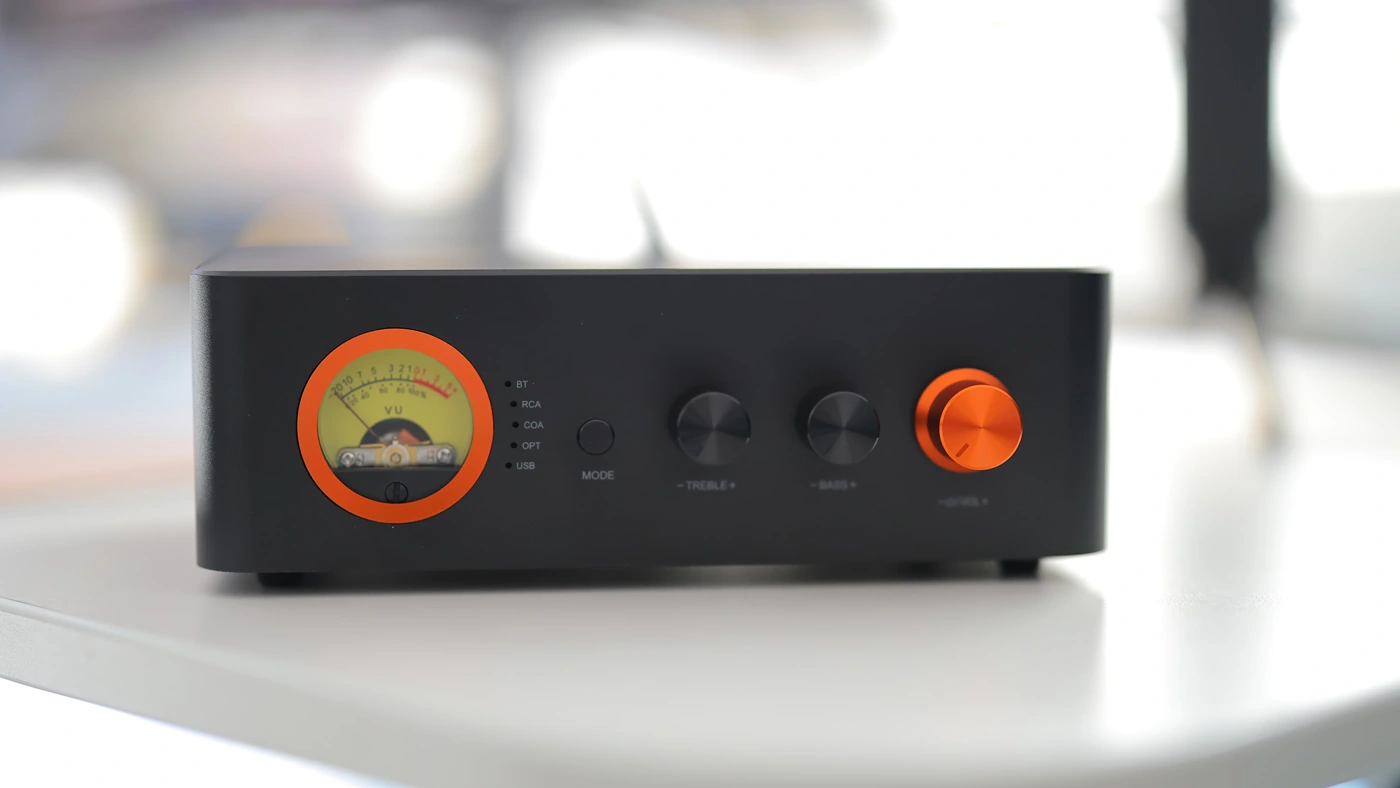
Introduction
Fosi Audio is a popular manufacturer from China, having currently in production quite a few products with high performance, including the MC 351 VU Meter / Speaker Amplifier, as well as the Fosi Audio v3 AMPs, that are some of the most popular in the entire world, and which we’ve reviewed recently. The company has excellent support, good build quality and one of the highest price / performance ratios we’ve seen in the audio industry, so they are always fun to review and hear, although they mostly play in the entry-level range. As an Amazon Influencer, I earn from qualifying purchases, and using the purchase links in my reviews helps me maintain this website and Youtube Channel. Huge thanks to Fosi Audio for providing us with the sample for this review.
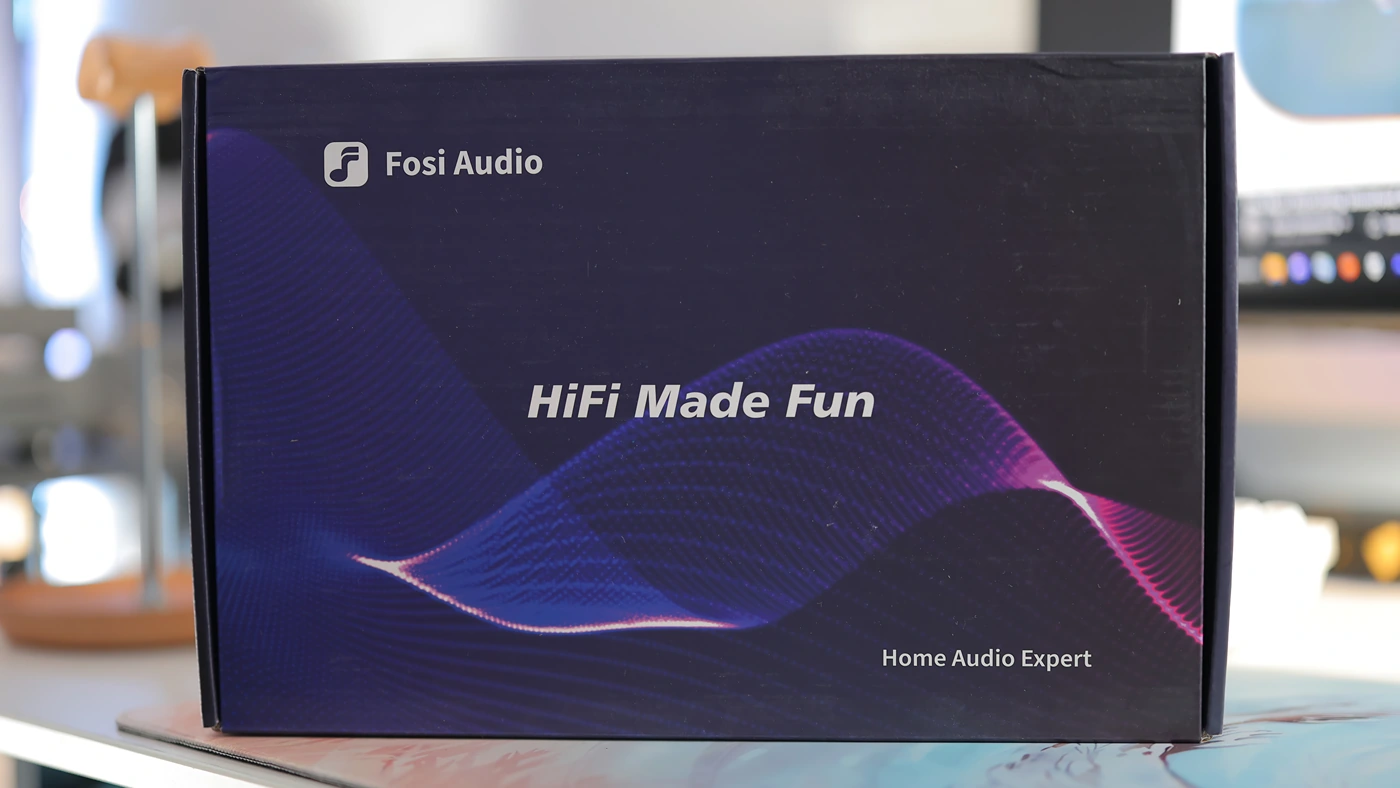
PROs – One of the most comprehensive lists of features found in a product at this price point. The price includes tax, and the build quality is unbelievably good for the price paid. Sonically, it has EQ which is excellent for a pair of entry-level speakers, and it has good driving power too. USB, Bluetooth, Optical and RCA inputs.
Cons – Some bugs with the USB input, Pop sound when it turns on and off, No Remote, Vu Meter does not move at all with most speakers unless you’re listening incredibly loud, as it measures the speaker output and not any of the inputs.
Product Link
Amazon – https://amzn.to/4h2LF1i
Build Quality/Aesthetics
In the long list of devices that look and feel like tanks, we have the Fosi Audio MC351, and it is one of the most solid DAC/Speaker AMP that I’ve seen. Fosi Audio considers the MC351 a way to redefine HiFi with unmatched value, and it is inspired by feedback received from prior customers, who needed all of those features in a single device.
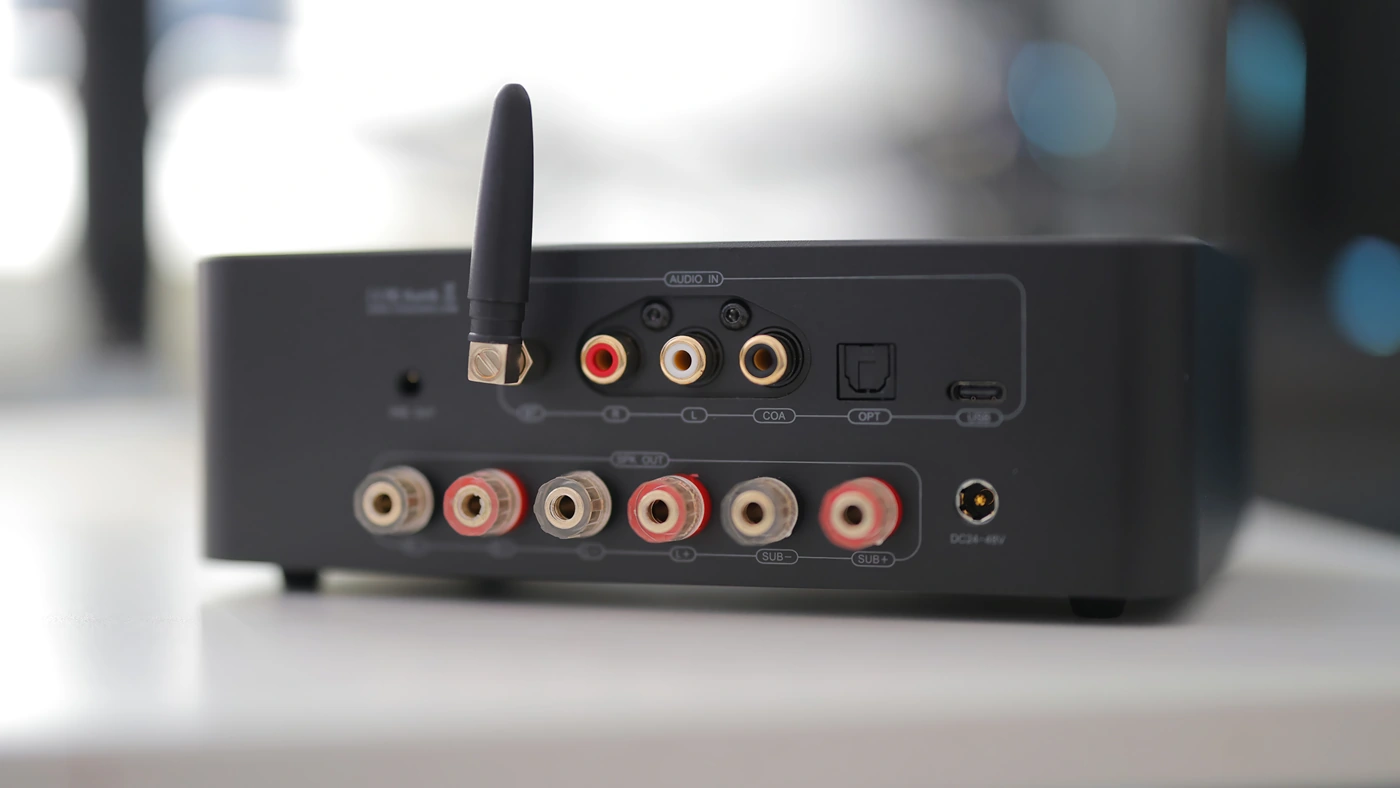
You can expect the best number of inputs in this price range, as we have Bluetooth, RCA, Optical, USB and Coaxial inputs. It literally covers everything, the USB is Type-C, and the Bluetooth works wonders, but the Bluetooth is limited at AAC and does not support LDAC or any advanced codecs. The output list includes speaker terminals for Passive Speakers, and a Passive Subwoofer, and also a PRE output in the form of a 3.5mm which can be used to power active speakers using a 3.5mm to RCA converter cable, and also to power an external subwoofer. All those outputs work at all times with no way to select which one is working, although all of them are affected by the volume wheel.
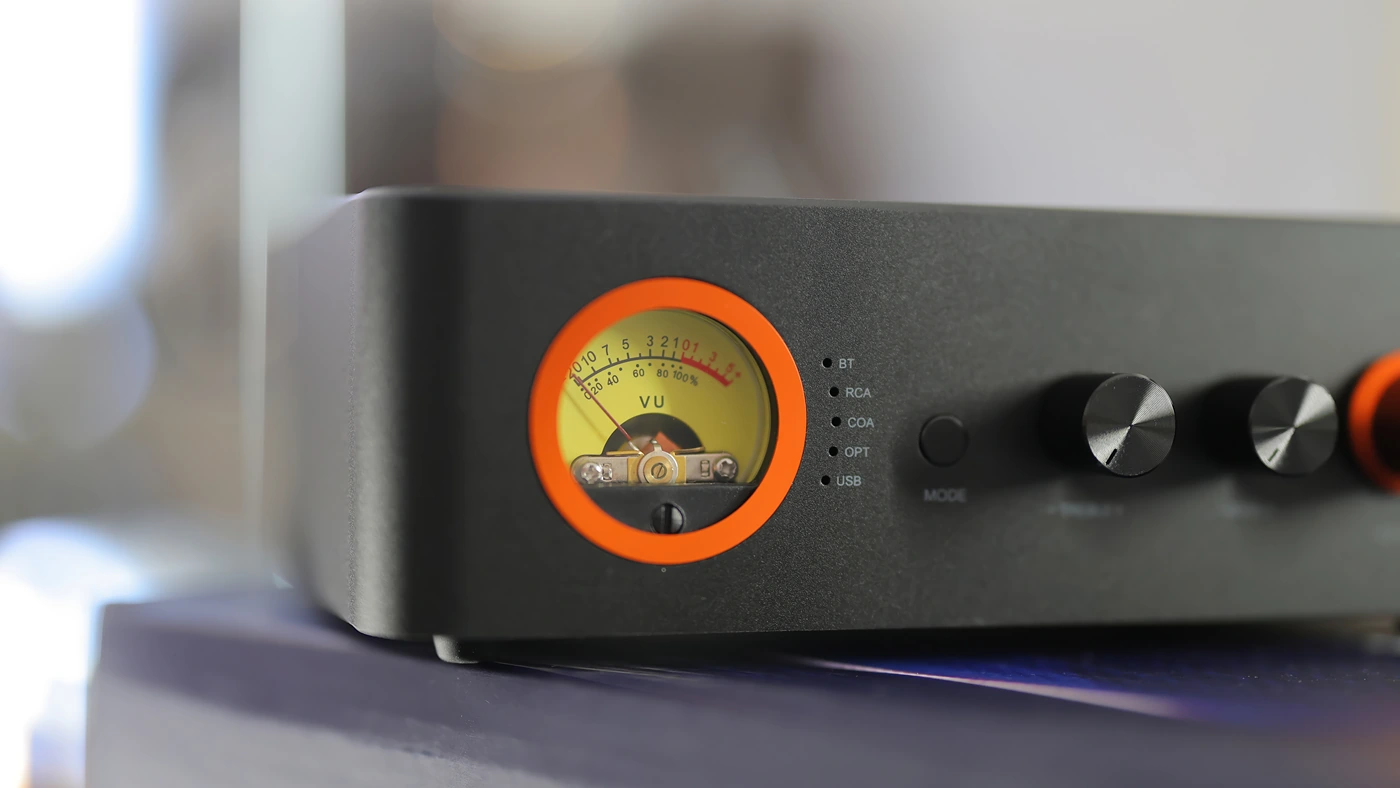
Fosi Audio also learned that in the entry-level range, most speakers are either way too bright or way too dark, and need some mild adjustment. So, they included two adjustment wheels, one for bass and one for treble, and at half, the sound is fairly neutral and spot-on linear. I found that with most speakers, I prefer adding some bass, and leaving the treble either at neutral, or adding a bit of extra. You can rely on the Dual AMP Chips which have a 100 aluminum alloy cooling fins to improve heat dissipation and make sure the MC351 never overheats.
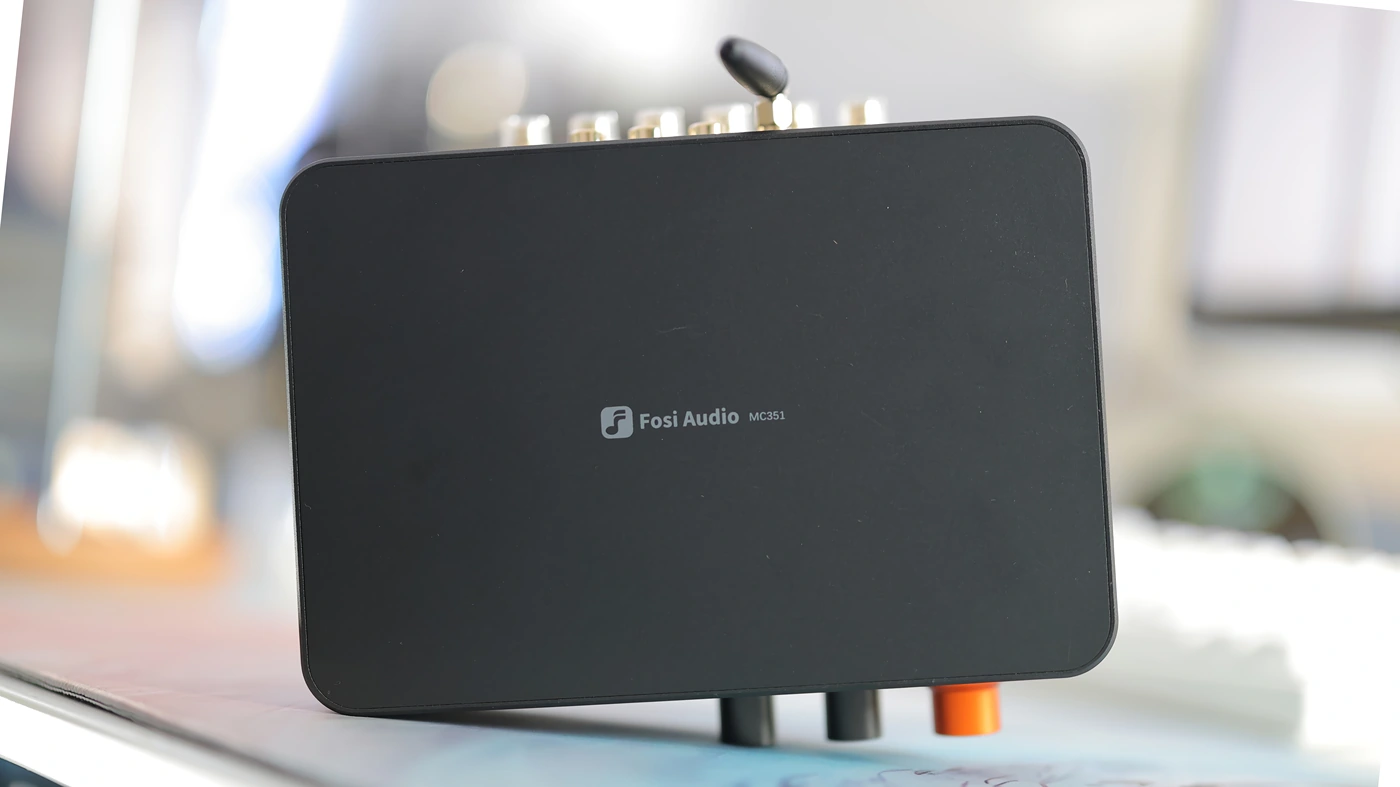
You can find online that Fosi Audio MC351 has a large chassis, whole-body heatsink, and side ventilation with dust covers, and while the unit does indeed act like a whole-body heatsink, I did not notice any side ventilation, so the text might be from before the MC351 was officially launched, as really it runs cool and does not need any kind of extra ventilation. It takes just 2 minutes for the MC351 to enter standby, and while it is on, you will not hear any kind of passive noise or hissing, which is extra nice, especially in the price point. The whole capacitor array is a Dual 4700uF capacitor, which for the price point is pretty nice.
USB DAC / Subjective Usage
You can cycle through the input / mode by pressing on the button next to the treble wheel, and it works well, plus the mode always restores to the last used method. The quoted SNR is not very high at 100 dB, but it mostly translates to distortions at louder volumes, as with no music playing, I cannot hear any kind of hissing. The impedance of the headphones is best kept in between 4 and 8 OHMs, with MC351 not working well with speakers that have a much lower or much higher impedance.
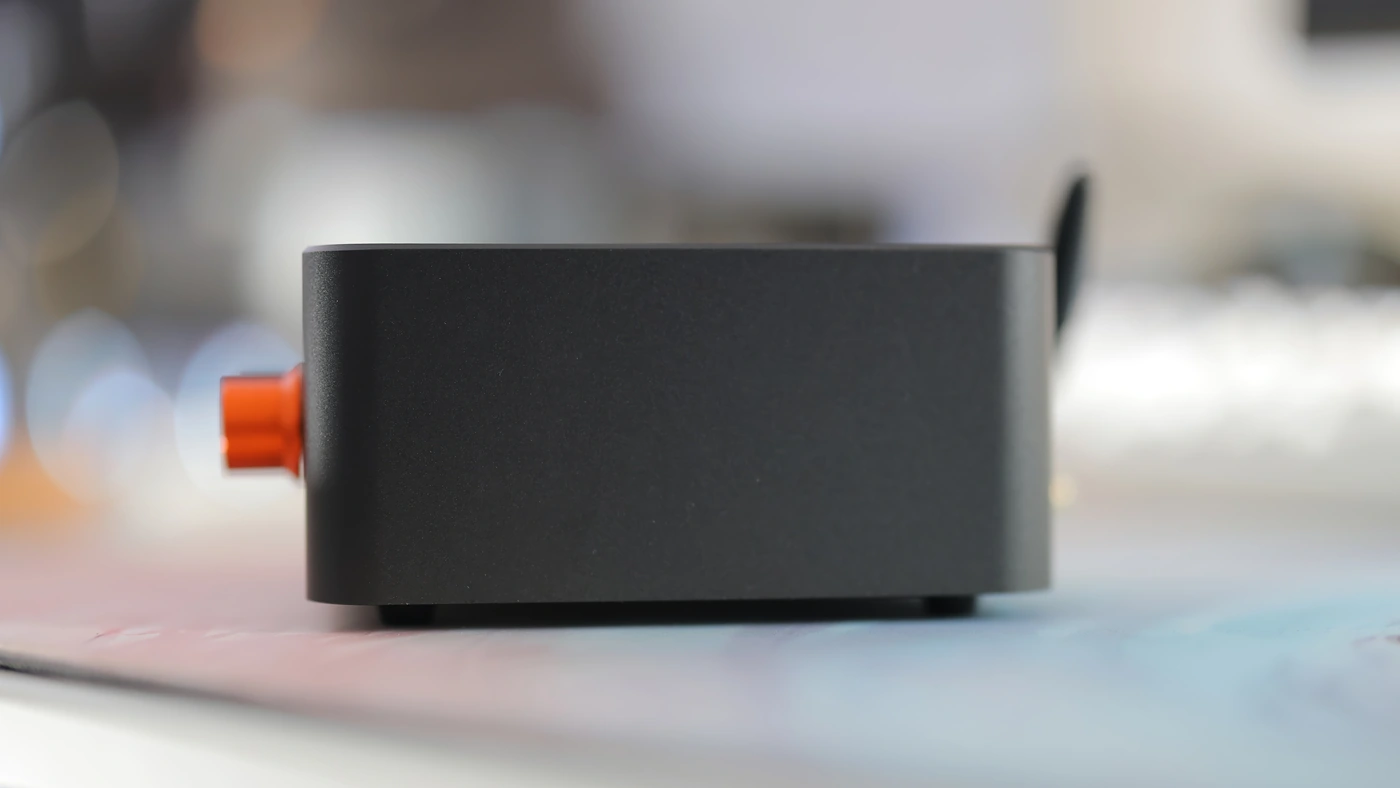
The VU Meter is the most beautiful, most mechanical VU Meter I’ve seen in my entire life. It has a beautiful orange glow, but in one word, it simply does not work. It measures the total output of the speaker amplifier, which means measuring a max of 165W x2 + 350W for the subwoofer at 4 OHMs, so unless you have incredibly hard to drive speakers, or unless you’re listening to a concert in your room, you will not see the needle of the VU Meter moving.
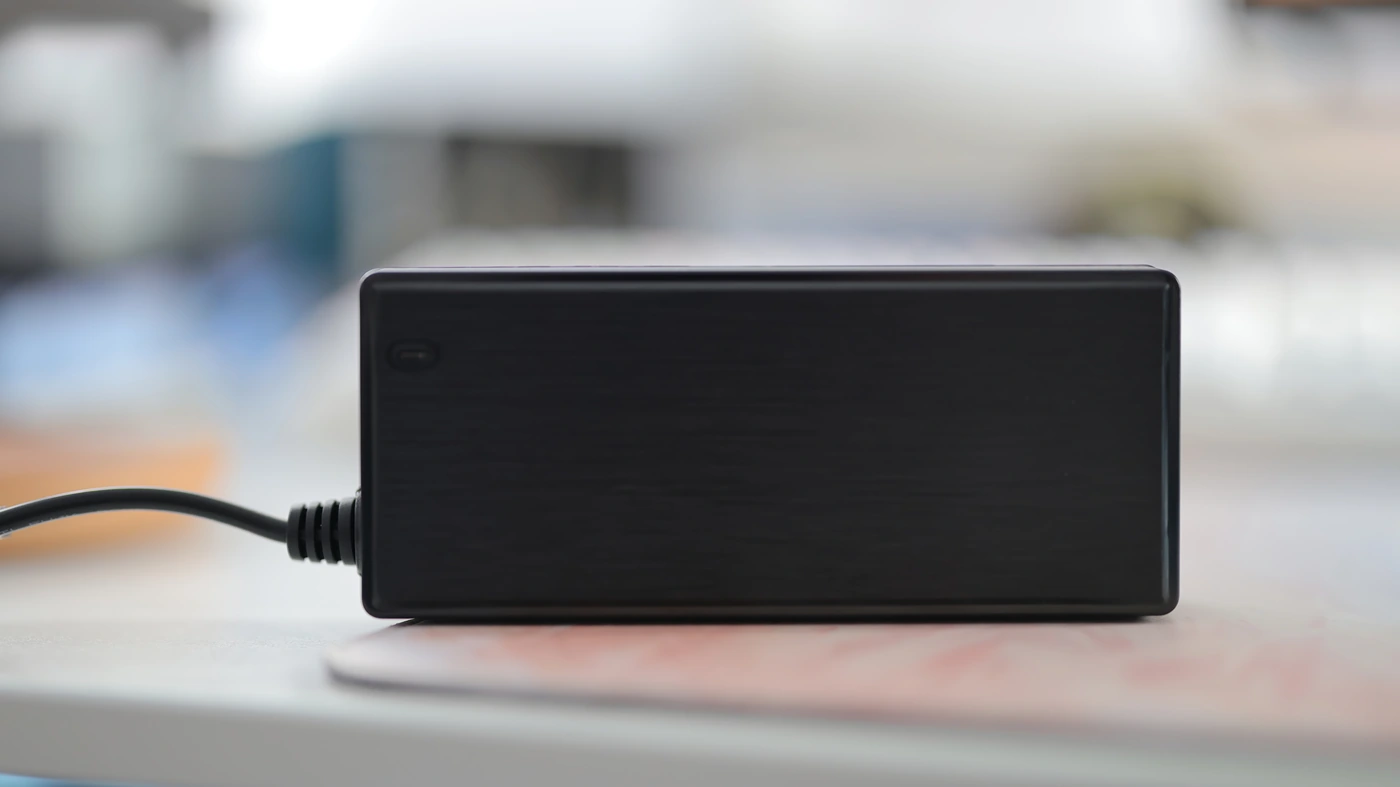
As the whole amplification is provided by two Texas Instruments TPA3255 Class-D Amplifier chips, the sound of the MC351 will be familiar. This OP-AMP has been seen on Fosi Audio V3, AIYIMA A07 PRO, Fosi Audio BT20A PRO, and Fosi Audio TB10D, so it is a popular entry-level solution, yet as far as I am aware, MC351 has the Dual variant, while most of the competition, including the other AMPs from Fosi use a single chip.
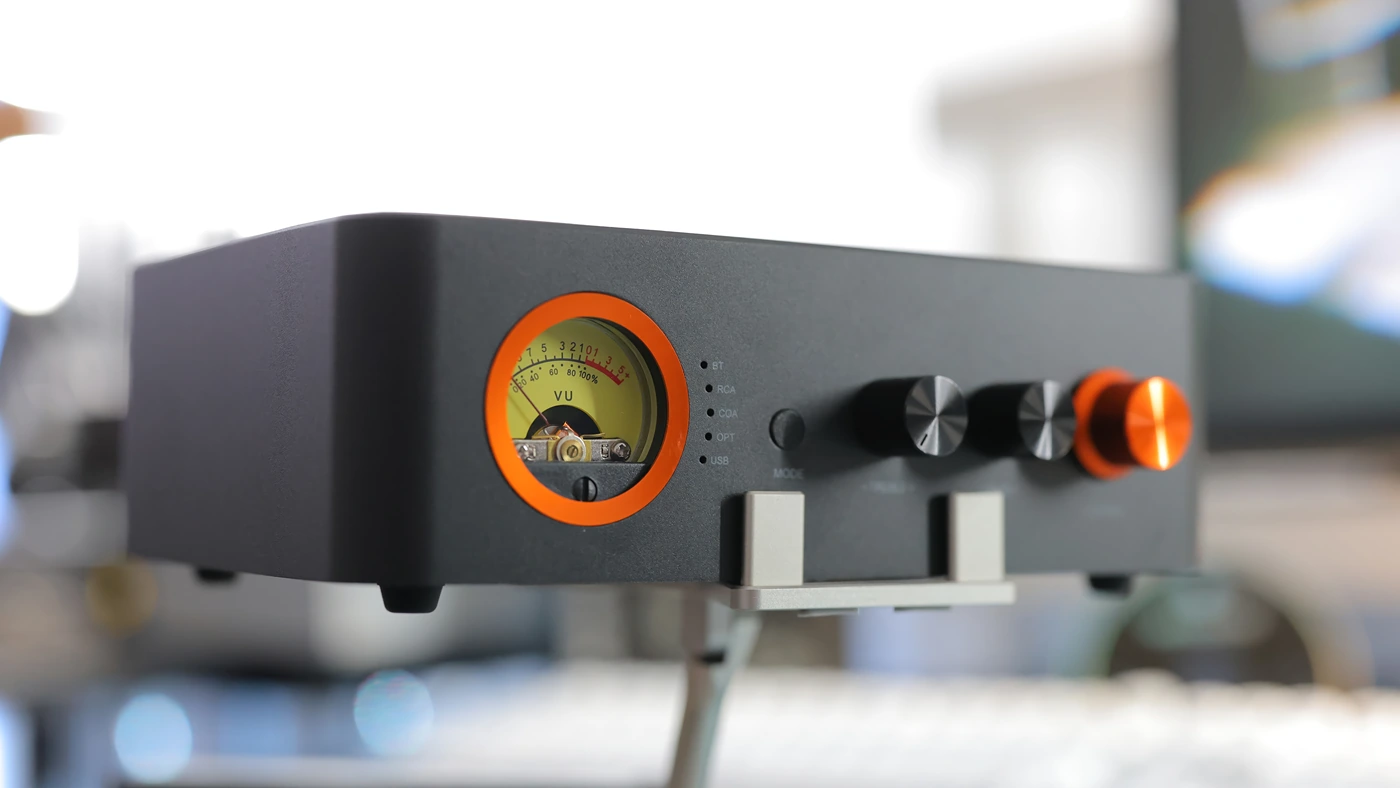
The only other issue I noticed with MC351, other than the VU Meter not moving unless the sound is comically loud, is that when using it via USB, you can notice at random times a loud noise, almost like white noise overtaking the whole sound. Sometimes it lasts 3-5 seconds and goes away on its own, other times you have to turn the MC351 on and off, and other times you have to change the data rate from the Sound Settings in windows to solve it. This might be an issue I encountered only on my PC, and I am using a conspicuously long USB cable, but the Bluetooth input, and RCA input does not have the issue, nor does the Optical input have the issue.
Sound Quality
Pairings – When judging the Fosi Audio MC351, I got it paired with Pylon Audio Diamond 30 mkii, Audience ClairAudient 1+1 V5, KLH Model Five and NHT C3. It can easily drive all of them, at times too loud, as the sound gets too loud too quickly, so most of the time I have to lower the digital volume to get any usable volume out of MC351.
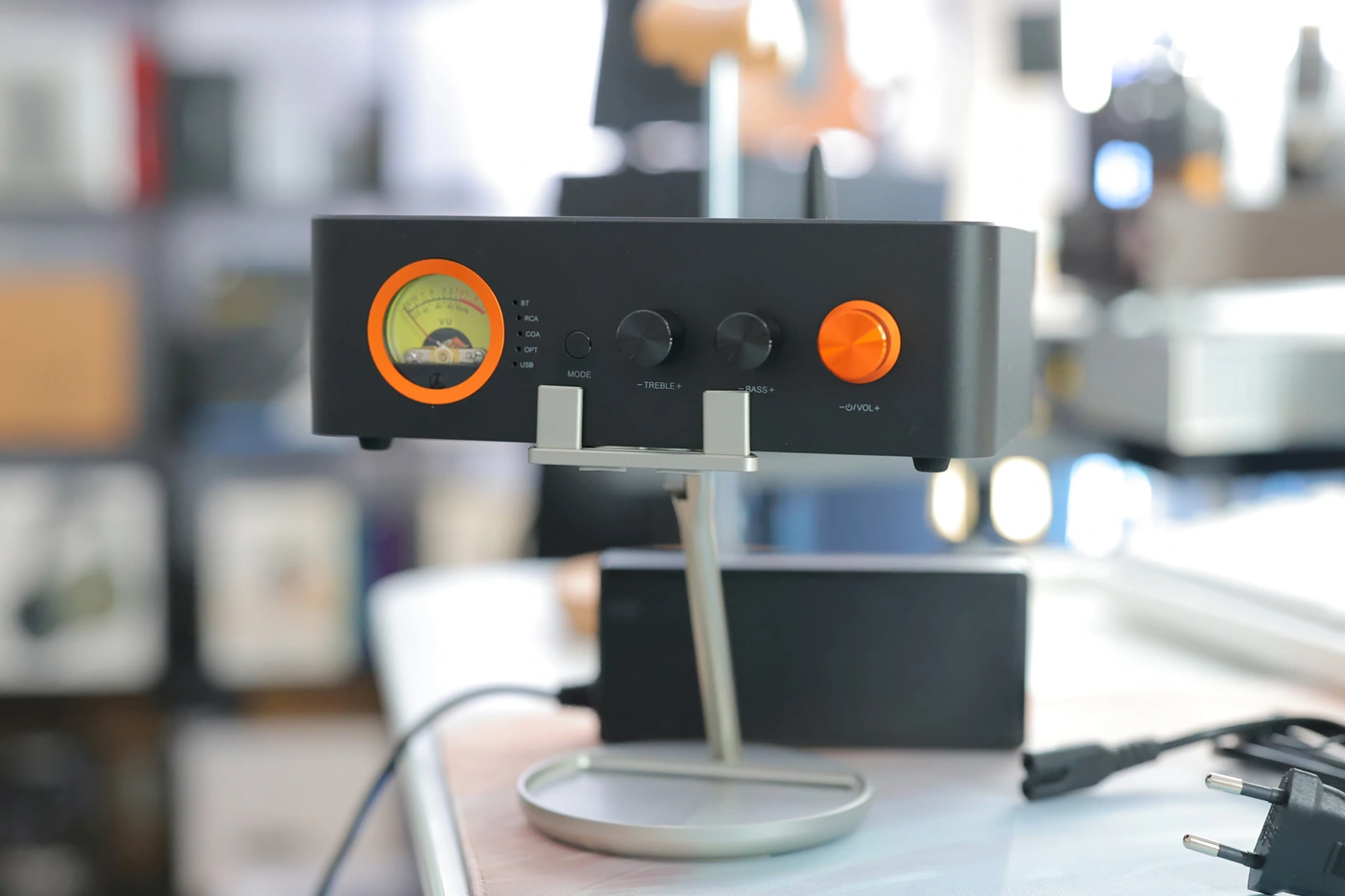
Overall Signature – I’ve noticed this trend before, the EQ meters are there to be used, as with Fosi Audio Mc351 the sound is really linear, has a mid-centric presentation, with an airy and soft presentation, and it feels vocal, rich and full, but does not have a lot of substance and kick if you don’t add some extra bass from the Bass EQ Slider. The treble is also rolled-off and soft, and adding some treble helps a lot, so the bass wheel sits at around 3 o’clock and the treble wheel between 1 and 2 o’clock for the best results. This being said, the sonic review will cover the MC351 with both sliders at neutral, as that’s the experience you’re getting out of the box. The sound is the same or at least very similar across all inputs, the level of detail and clarity does not change audibly when using Bluetooth, Optical or RCA inputs, or USB inputs.
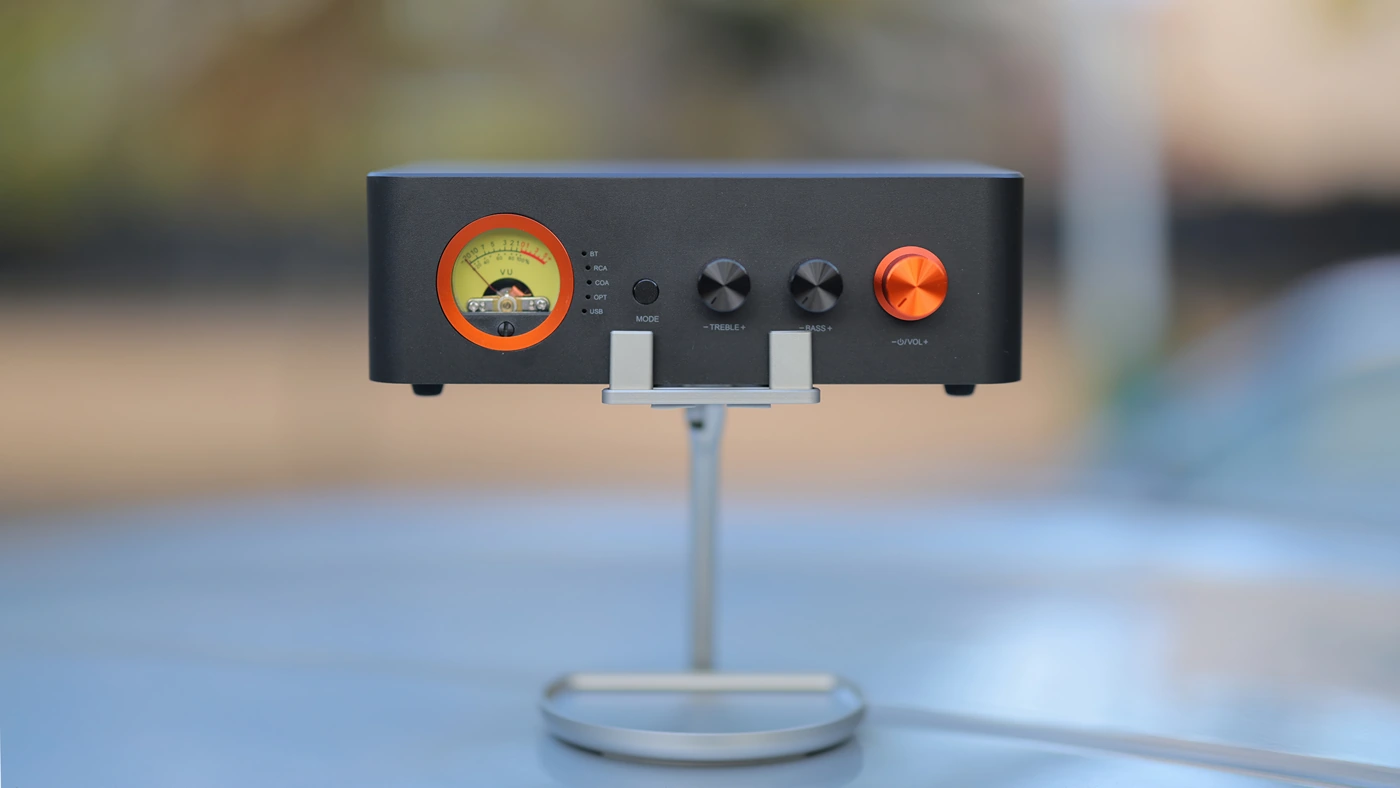
Bass – Starting from the low-end, we have a linear bass, which is soft, and has a natural-long decay, with a rather shy presence and quantity. I found that I can pump more low-end, more warmth, and a better presence and body for most instruments by engaging the EQ Wheel. Even turning that wheel to max does not result in a sound that is too dark, and you can feel free to do it, as it does not add distortion either.
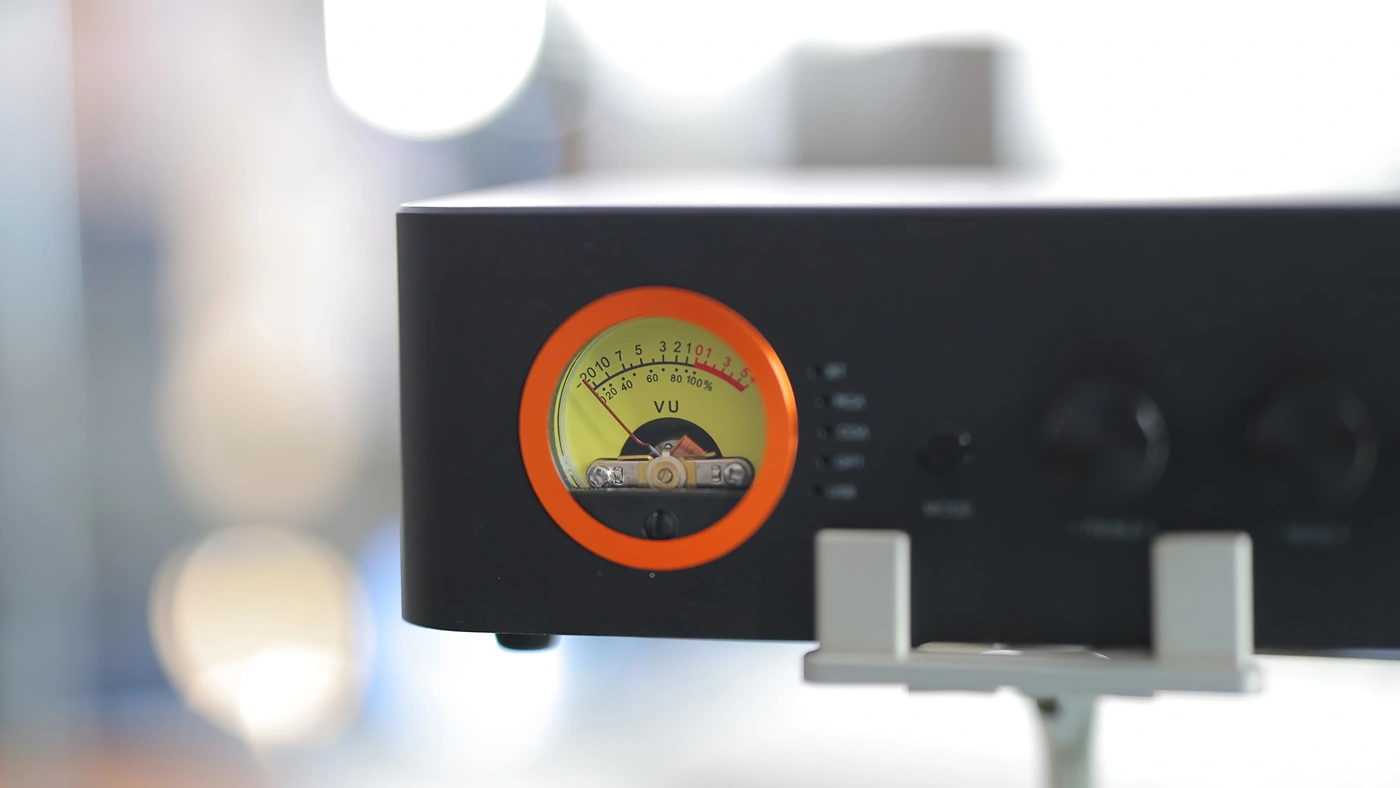
Midrange – The midrange of the Fosi Audio Mc351 is presented louder than the bass and the treble and is a soft, rich and gentle midrange with low levels of attack. Voices are always a central part of the sound, especially lead voices, while MC351 has a really wide and airy sound, which is relaxed and laid back.
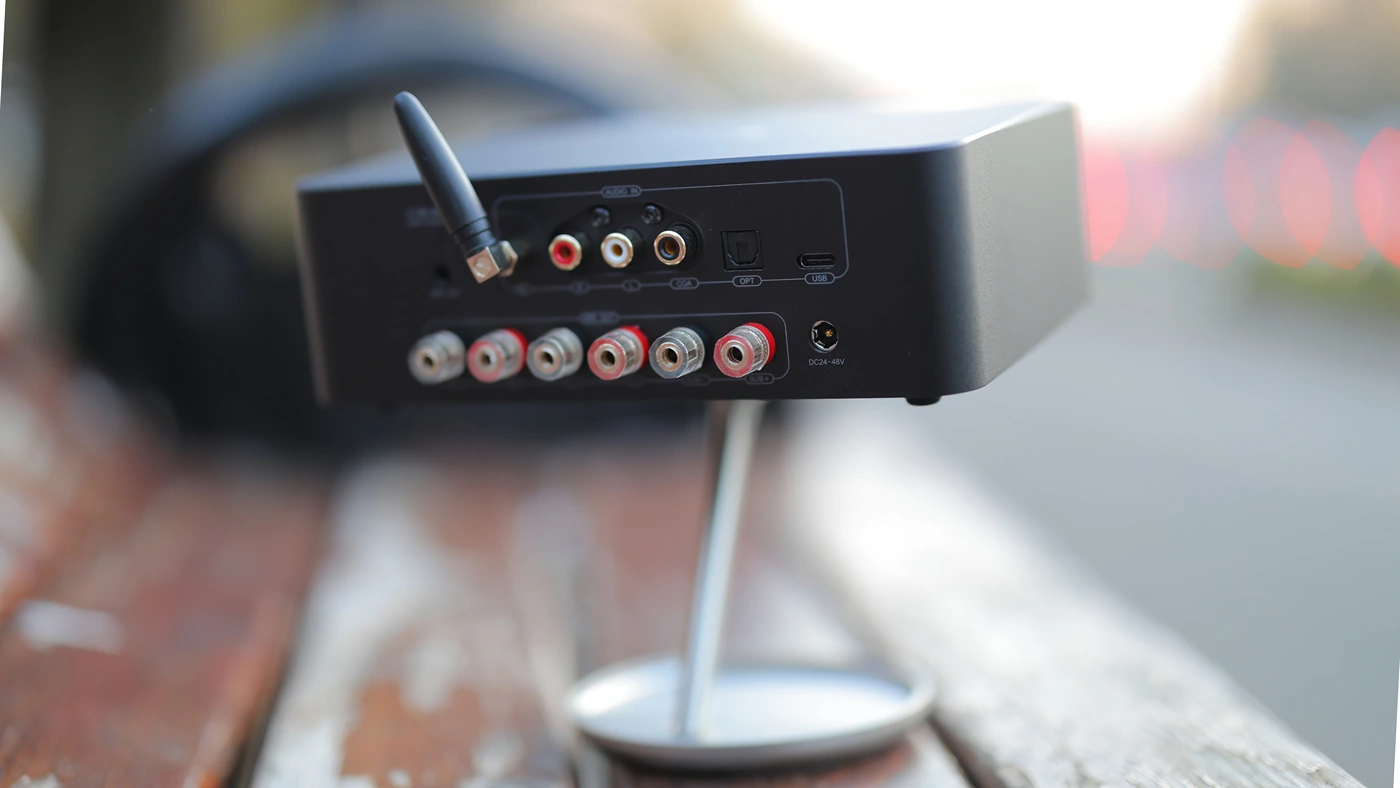
Treble – With a soft and smooth treble, MC351 is just safe and pleasing at default, but you can add more spice and energy to the sound by using the treble wheel. This one works best up to 3 o’clock as after this, the sound gets too sharp and you hear quite a bit of distortion in the treble.
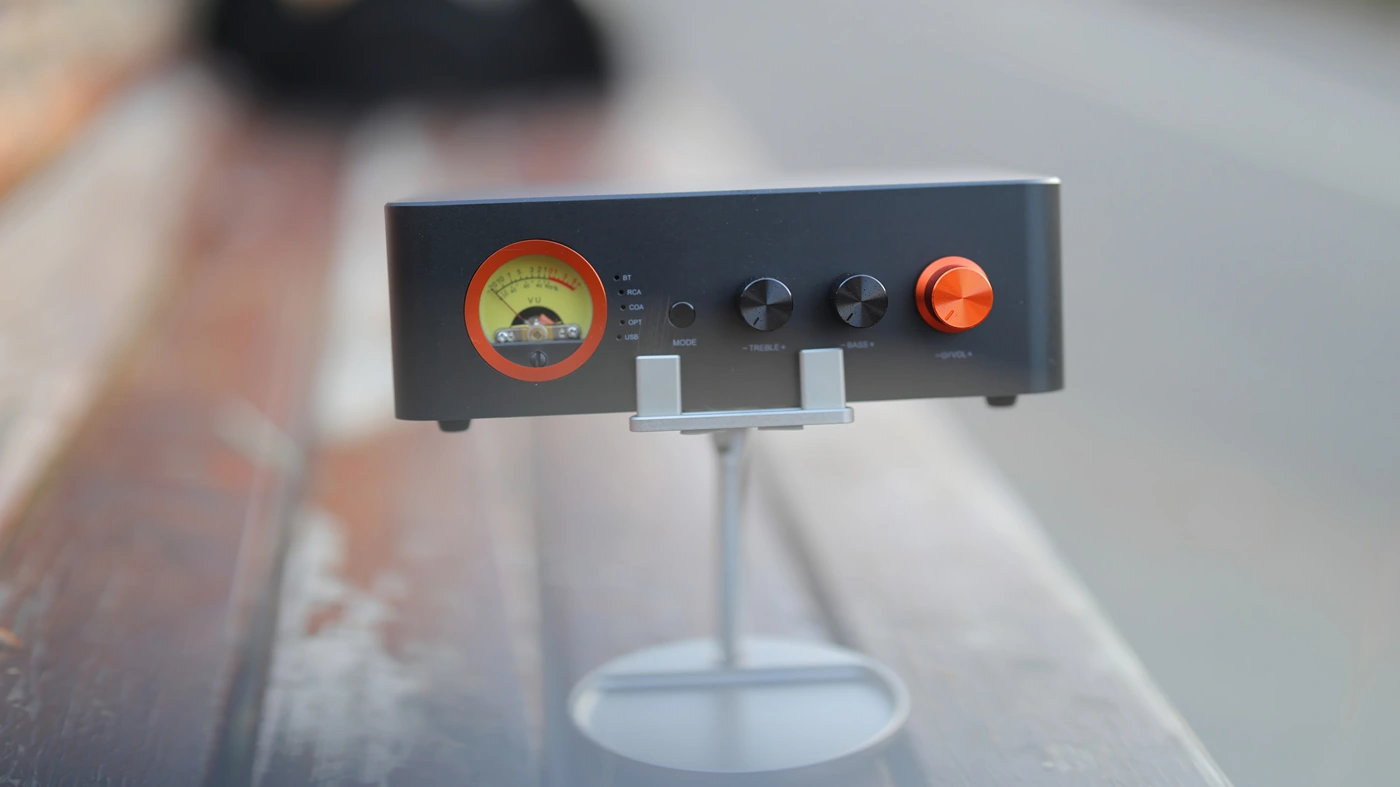
Loudness Saturation Gradient – This is the biggest weakness of the Fosi MC351, the sound signature changes drastically with volume, and at lower and medium volumes, the sound is rich, velvety and smooth, but it gets aggressive, and quite forward at louder volumes. The THD and distortion also grows with the volume, but the VU Meter needle stats moving only above about 95dB on most speakers, so you will have to use them loud to see the beautiful visual effect.
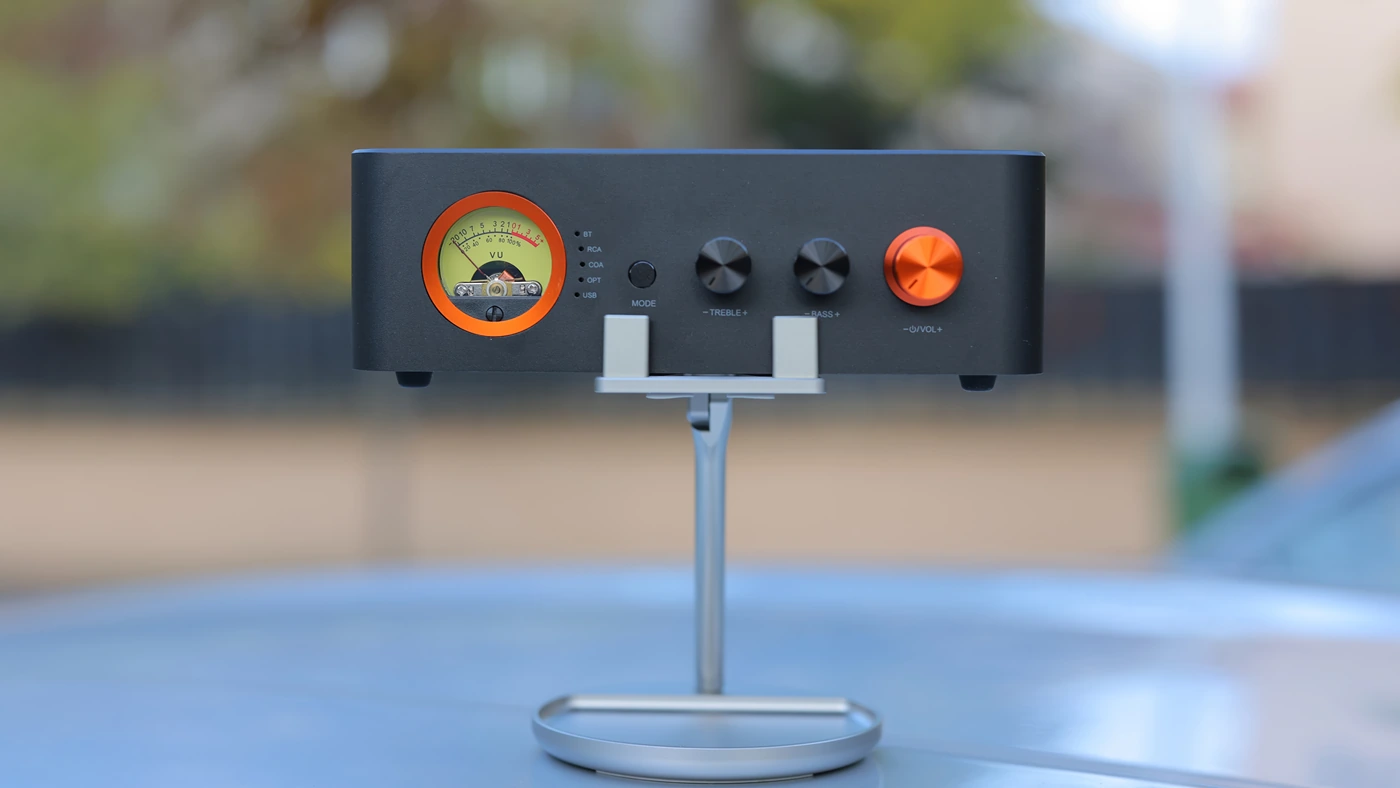
PRaT / Textures – The texture level changes when engaging the EQ wheels, as at default MC351 has a very smooth and smooth texture level, you will not hear much texture in music. Adding more bass adds more weight and substance, thick and beefy textures, while adding treble adds more micro textures, sparkle and detail, and to get the best resolution and clarity, you have to add both.
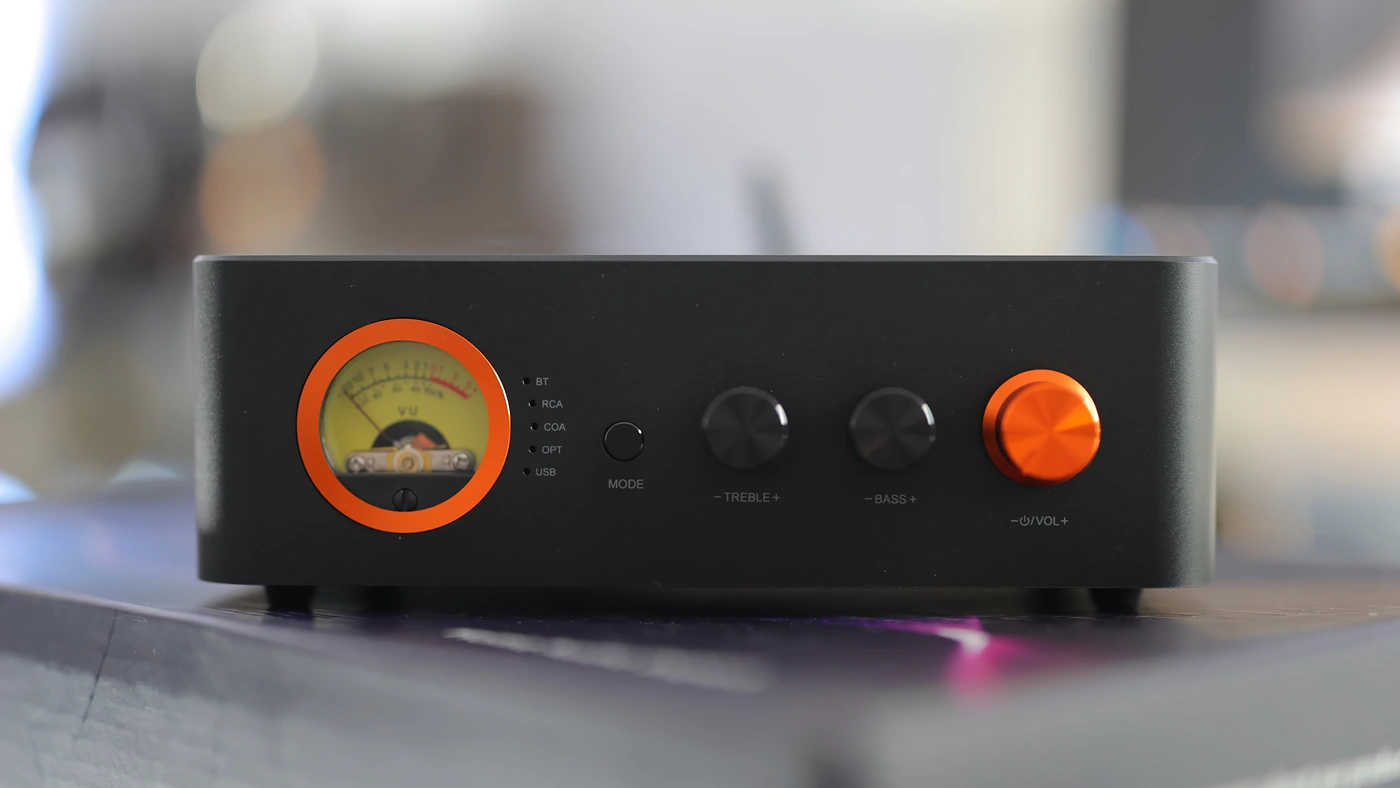
Soundstage – Although I did not make a big case out of it, the staging of the MC351 is pleasing, it presents a fairly wide and clean image, with strong separation between channels, and a good level of instrument separation, for the price point. Layering is not very strong and MC351 does not separate instruments, but represents them together, as part of a bigger whole.
Value and Conclusion
Fosi Audio does really deliver on what they promise to with the MC351, it is a speaker amplifier that redefines what Hifi Price / Performance ratio and value is, it is exceptionally strong in value, although some minor sacrifices have been made here and there, especially on the USB input, and when setting the VU Meter to measure the speaker output rather than the input signal strength so for most quiet and medium listening volumes, the VU Meter Needle will not move much.
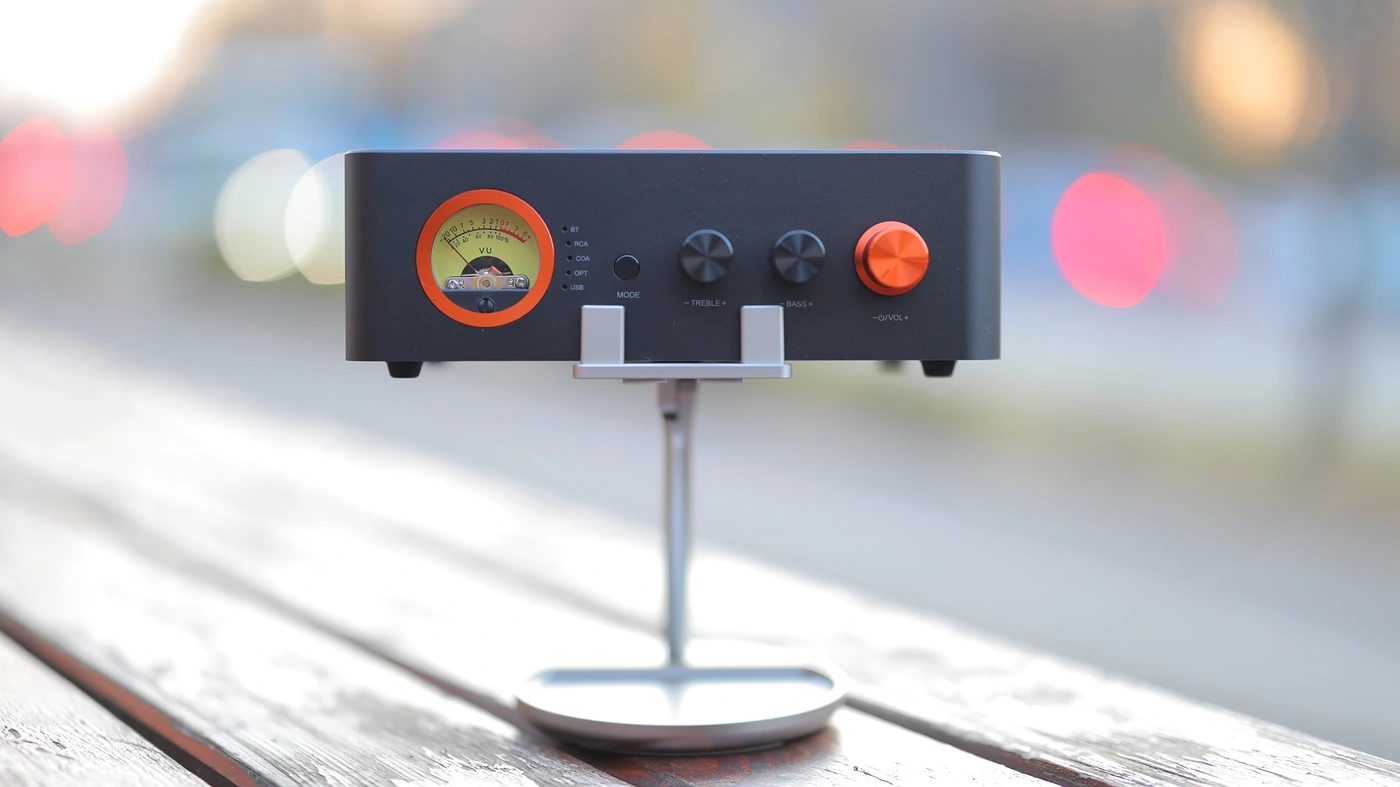
At the end of the day, those are just minor issues, and the actual sonic performance for most people will be excellent. The Bluetooth input sounds brilliant, it is as detailed as the bluetooth input, the RCA input too, there is no audible self noise, and the unit stays cool, so if you need a speaker amplifier, with outputs for both speakers, and a passive subwoofer, or even active speakers and an active subwoofer, Fosi Audio MC351 will deliver one of the best performance levels you can get in this price range.
Product Link
Amazon – https://amzn.to/4h2LF1i
--- Please remember to stay safe, and always have fun while listening to music!---
- If you have a dime to spare, please donate, and help us! It would make the day brighter for me and my wife-
Full Playlist used for this review
We listened to more songs than those named in this playlist, but those are excellent for identifying a sonic signature. I recommend trying most of the songs from this playlist, especially if you’re searching for new music! The playlists are different for Spotify, Tidal and Youtube, and based on the songs I enjoy and are available on each!
https://www.youtube.com/playlist?list=PL_cjBXGmwSHSdGcwuc_bKbBDGHL4QvYBu
https://open.spotify.com/playlist/5J3oloz8Riy9LxEGenOjQ0?si=979ba4f082414be7
https://tidal.com/browse/playlist/330fd544-8e5b-4839-bd35-676b2edbb3d5
--- Contact Us ---





